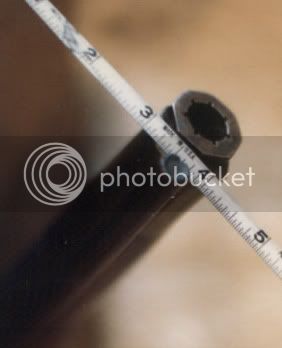Now-a-days we have good products to get lead fouling out of barrels from shot or REAL bullets.
What did they use way back when?
What did they use way back when?


Spikebuck said:Now-a-days we have good products to get lead fouling out of barrels from shot or REAL bullets.
What did they use way back when?
hawkeye2 said:I've been shooting minies for 27 years and my wife has been shooting them for 20 or more and I have never found any lead in the barrels of any of the guns including a pitted original '61. We have used at least 5 different lubes over that time.
The original GI lube was beeswax and tallow and the barrels were well finished inside. I doubt leading was an issue with Civil War era military arms. [/quote
I seem to recall that Federal soldiers were issued "cleaning bullets" with a zink washer at the base to scrape fouling from the bore. I think ever 10th bullet was a cleaning bullet.
Spikebuck said:Now-a-days we have good products to get lead fouling out of barrels from shot or REAL bullets.
What did they use way back when?




Enter your email address to join: